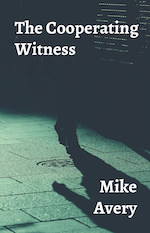(If you’re trying to write a convincing legal thriller but you’re not a lawyer–don’t be guilty of getting it wrong. The internationally known attorney (and crime fiction author) Michael Avery provides all the basics.)
In the Courtroom, the Jury is the Important Audience
The judge runs the courtroom, makes the legal rulings, and may appear to be the central character in the drama that unfolds. But the jury decides who wins the case. That’s who the lawyers are trying to win over. Jurors don’t have a speaking role until they deliver their verdict, but the writer should be attuned to their nonverbal reactions to the evidence as it comes in.
I’ll never forget my first jury trial—a dog bite case. My client was the dog’s owner. The opposing lawyer was also trying his first case, and we told the judge before the start of proceedings that we were novices. After the verdict, the judge invited us into his chambers. “You both did a good job with the evidence and trial procedure,” he said, “but the next time you try a jury case, you might want to look at the jurors from time to time.”
The same advice holds true for writers. Good lawyers tell their witnesses to turn and address the jurors when they answer questions, making eye contact with individuals if possible. A lawyer asking a witness an important question may face the jury as she drives home her point. She’ll put documents and photographs up on media screens for visual impact on jurors. Lawyers use the pace of questioning, physical movement, and tone and volume of voice as tools to play to the jury.
The writer should let the reader see how the jurors react to these efforts to persuade them. Jurors strive to appear impassive, so you shouldn’t overdo this. When testimony or evidence is telling, however, we might see reactions that reflect shock, surprise, disapproval, anger, sympathy, and the like. The writer can bring us closer to the jurors by giving some of them names and occupations or describing their clothing or other aspects of their appearance. In a rare case, the overt reaction of a juror may be pivotal.
In another case I won’t forget, I represented an interracial couple in Boston who were suing a landlord who had refused to rent them an apartment. The judge’s questions during jury selection failed to unearth any prejudice against such marriages. My first witness was the husband, a tall, handsome black man wearing a business suit. I asked him his name. The jury foreman, a middle-aged white man, a lineman for the cable company, turned his back on the witness, set his jaw, and stared toward the back of the courtroom. He remained that way during the entirety of my client’s testimony. The trial was over, although it lasted two more days before the jury returned a verdict for the landlord.
The Difference Between Direct and Cross-Examination
If you include courtroom testimony in your story, you need to understand the difference between direct and cross-examination of witnesses. Otherwise, your dialogue will appear amateurish and, worse, will move the legally literate reader out of the trance of your narrative as she quarrels in her mind with the form of your lawyers’ questions.
The lawyer who calls a witness to the stand is the first to question him, and this lawyer engages in what we call direct examination. The basic rule of direct examination is that the lawyer may not ask “leading questions.” A leading question is one that plainly suggests the answer the lawyer wants to hear.
For example, “You saw the victim get shot, didn’t you?” is a leading question. Any question that begins with “isn’t it true that,” or ends with “isn’t that right,” or employs similar phrases is a leading question.
The absence of such expressions, however, does not guarantee that a question is not leading. For example, if the time when a witness arrived at the scene is an important issue, the question, “Did you get to the park at eleven o’clock?” would be leading. “What time did you get to the park?” would not be leading. The witness is supposed to be providing the evidence, not the lawyer. A good way to avoid leading questions is to begin with the words “who, what, where, why, when, or how.”
When the opposing lawyer questions the witness, that is cross-examination. On cross, leading questions are permitted. Indeed, lawyers are trained to ask leading questions on cross-examination in order to maintain control over what the witness says. The idea is for the lawyer to supply the information. The witness is forced to agree with it or deny it. A prosecutor might ask an alibi witness, “You and the defendant have been good friends for thirty years, isn’t that right?” That’s a leading question and the idea, of course, is to show that the witness is biased.
As mentioned above, the use of phrases such as “isn’t that right,” will render a question leading. A cross-examination that consists exclusively of questions in that form, however, may become tedious and lose its force. The fact that something is a question, not a declarative statement, can be indicated with a rising intonation when made orally, or with a question mark when written.
For example, this series of questions could be put to the alibi witness by the prosecutor, all of which he is compelled to answer with a simple “yes”:
“The defendant asked you to testify on his behalf today, didn’t he?”
“You’ve been close friends for thirty years?”
“He was your roommate in college?”
“Best man at your wedding?”
“Your son’s godfather?”
In this series, the shorter and shorter questions suggest an increase in the tempo of questioning and a physicality to the way the witness has been hemmed in by the suggestion that he is too close to the defendant to be trusted by the jury.
The writer should exploit the dramatic difference between the roles of the lawyer and the witness in direct and cross-examination.
During direct examination, the spotlight is on the witness. The personality of the lawyer fades into the background. She remains relatively still and simply facilitates the ability of the witness to provide the jury with a narrative that furthers her client’s story. During cross-examination, the lawyer furnishes the narrative and provides the drama.
She may move around the courtroom, gesticulate, raise and lower her voice, confront the witness with documents and photographs, or underline her points with pregnant pauses and telling glances in the direction of the jury. In the hands of a skilled cross-examiner, efforts by the witness to fight back will backfire and only make things worse for him.
The Police Cannot Take Someone into Custody for Questioning, or “On Suspicion”
Frequently in novels or movies the police grab somebody up and take them down to the station “for questioning,” or “on suspicion.” Actually, there is no such thing. Of course, a person may consent to “go downtown” with the police. If the suspect refuses to go voluntarily, however, the police will have to arrest him to take him to the station.
Police cannot arrest someone merely because they want to question him, or because they suspect he may have committed a crime. To justify an arrest, the police must have “probable cause.” Probable cause is present where specific facts and circumstances within an officer’s knowledge and of which he has reasonably trustworthy information would warrant a belief by a person of reasonable caution that a crime was committed, and that a given person committed it. It is not a toothless standard. A mere suspicion or a hunch is not enough. On the other hand, probable cause is less than enough evidence to convict someone of a crime beyond a reasonable doubt.
It’s lazy writing to allow the police to pick up someone merely because they want to question him. It’s far more interesting to tease out their investigation as they gather bits and pieces of evidence sufficient to establish probable cause to make an arrest.
There is Nothing Wrong with Circumstantial Evidence
There seems to be a widespread belief that a criminal defendant cannot be convicted if all the prosecution has is circumstantial evidence. This is not true. Courts routinely rely on circumstantial evidence as the basis for a conviction.
It’s important to understand the difference between “direct” and “circumstantial” evidence. Direct evidence refers to evidence that, if believed, establishes the proposition it is introduced to prove without any need to draw inferences. Suppose a witness testifies, “I saw the defendant shoot the victim in the head.” If a juror believes the witness, nothing more is required to conclude that the defendant shot the victim in the head.
Circumstantial evidence is evidence that establishes fact A, from which fact B may logically be inferred. If you find envelopes in your mailbox, you may infer that the letter carrier delivered them, even though no one saw her do so. If the police found blood that matches the murder victim’s DNA on the defendant’s body, the jury may infer that the defendant was in contact with the victim after he began to bleed. If the evidence shows that the defendant stood to gain from the victim’s death, the jury may infer that the defendant killed the victim.
A single piece of either direct or circumstantial evidence may not be enough to prove guilt of the charged crime beyond a reasonable doubt. Take the direct evidence that the witness shot the victim. That alone may not be enough to prove the charge of murder, if other evidence suggests it was an accident, or self-defense, or that the gunshot wound was not fatal. Take the circumstantial evidence that the defendant stood to gain from the victim’s death. That alone would certainly not be enough to prove the charge of murder.
The question in a criminal case is whether all the evidence taken together is enough to prove the charge beyond a reasonable doubt. That standard may be met even if all the evidence is circumstantial, and that is frequently the case. Suppose blood matching the victim’s DNA was found on the defendant’s body, the defendant stood to gain from the victim’s death, a knife with the victim’s DNA was found in the defendant’s house, the defendant’s fingerprints and no one else’s were found on the knife, and no one other than the defendant was seen to enter or leave the victim’s house during the relevant time period. All circumstantial evidence, but very likely enough to convict the defendant of homicide, at least absent other evidence suggesting an alternate explanation.
Most Defense Lawyers Aren’t Bothered by Defending Guilty Clients
The most common question people ask criminal defense lawyers when meeting them socially is, “How do you feel when you represent someone you believe is guilty and you get him off?” The fact is that this does not bother experienced criminal defense lawyers. It’s the lawyer’s job to force the prosecution to prove the case beyond a reasonable doubt and, if the prosecution cannot do that, the presumption of innocence requires a not guilty verdict. The presumption of innocence is there to protect everyone.
It has always amazed me that people do not ask criminal defense attorneys, “How do you feel when you represent someone you believe is innocent, and he gets convicted?” That’s a problem that keeps us lawyers awake at night.
The point is that it doesn’t ring true to have a lawyer excessively concerned about whether his or her client is innocent. The lawyer, unless he or she doesn’t believe in what they’re doing, should do the same job either way.
——————————–

 Mike Avery is a criminal defense and civil rights lawyer whose first novel, The Cooperating Witness, was released on July 1, 2020. He writes nonfiction about law and politics. He produces fiction on a broader canvass and is interested in the problems of contemporary America.
Mike Avery is a criminal defense and civil rights lawyer whose first novel, The Cooperating Witness, was released on July 1, 2020. He writes nonfiction about law and politics. He produces fiction on a broader canvass and is interested in the problems of contemporary America.
Beginning in 1970, Michael enjoyed a career as a civil rights and criminal defense attorney over four decades, representing clients in jury trials and arguing cases in federal and state appellate courts, including the United States Supreme Court. In 1998, he joined the faculty of Suffolk Law School in Boston, where he was a tenured professor, teaching Constitutional Law, Evidence, and related courses. In 2014 Suffolk awarded him the status of professor emeritus.
Michael graduated from Yale College in 1966 and Yale Law School in 1970. Recently, he returned to school and received an M.F.A. from Bennington College in January 2017.





